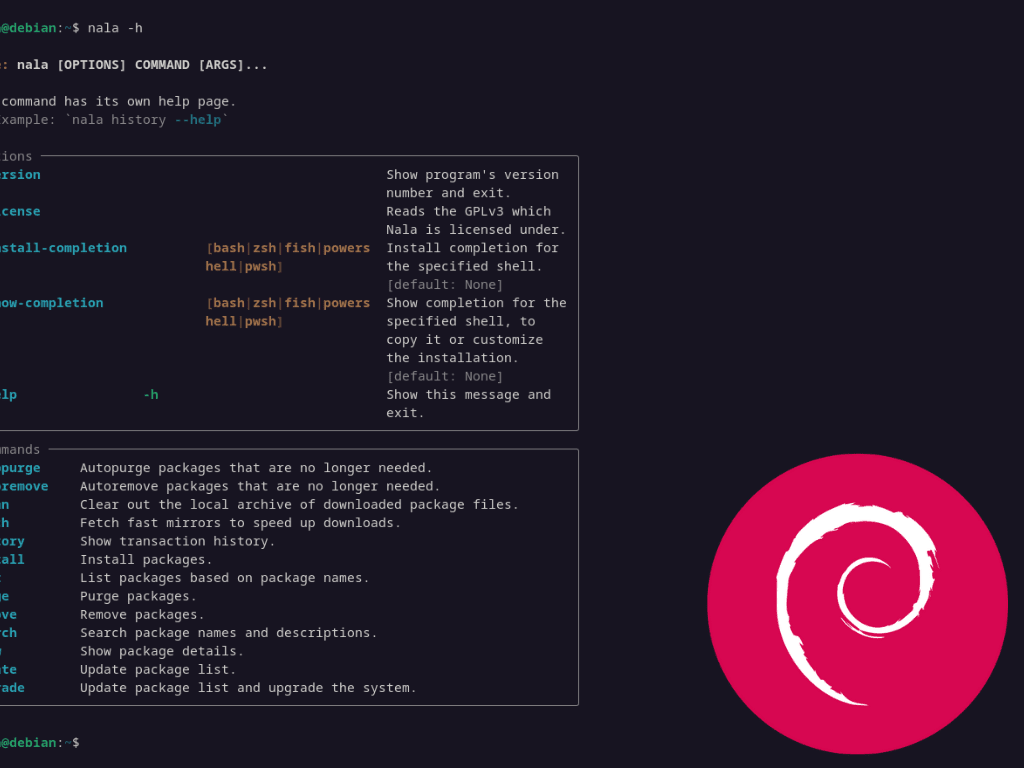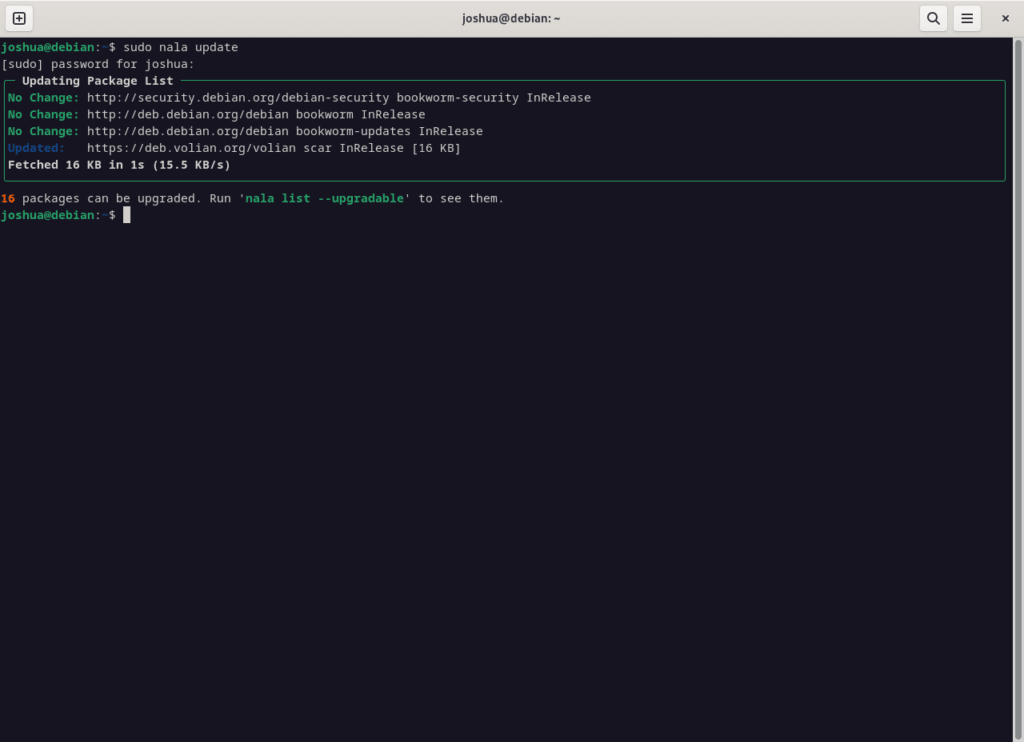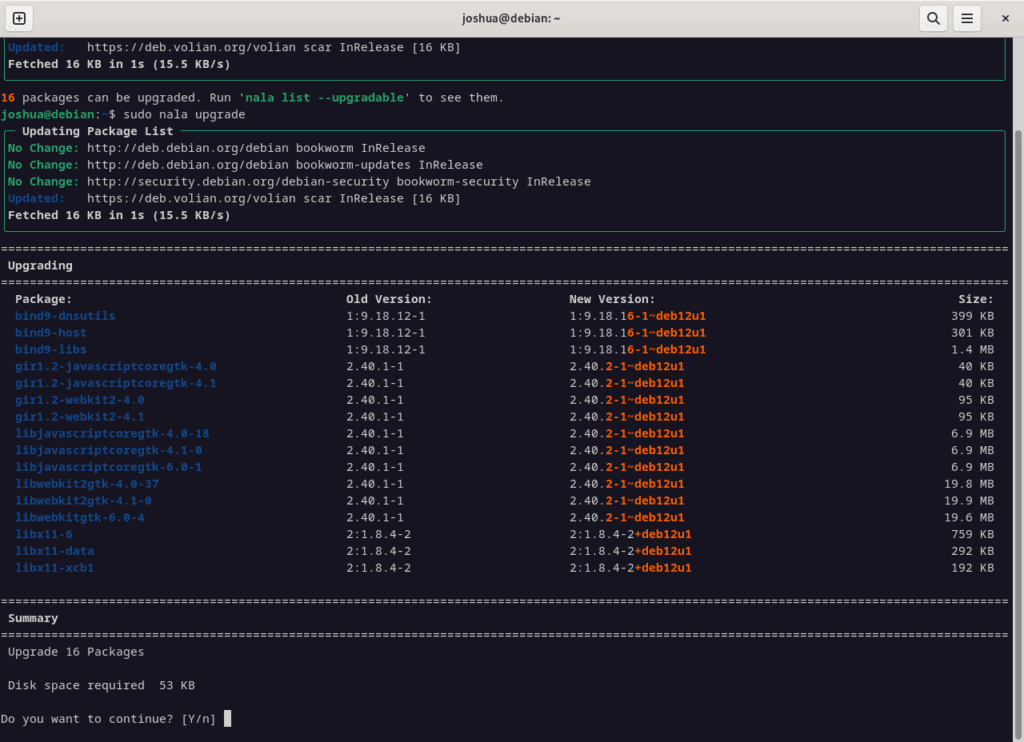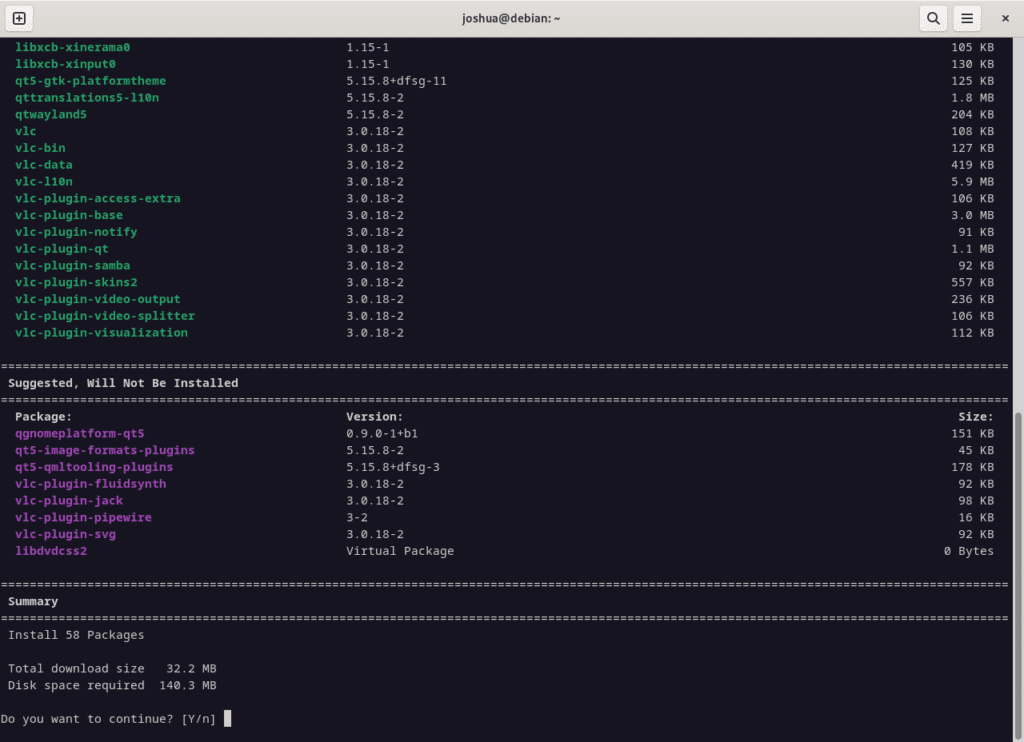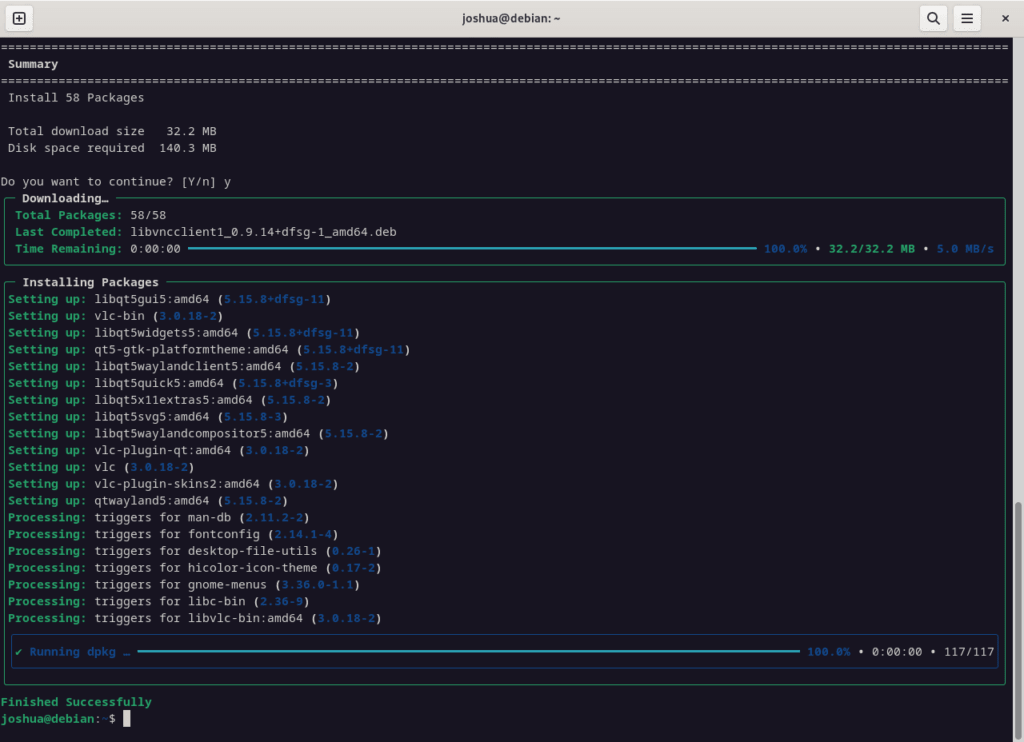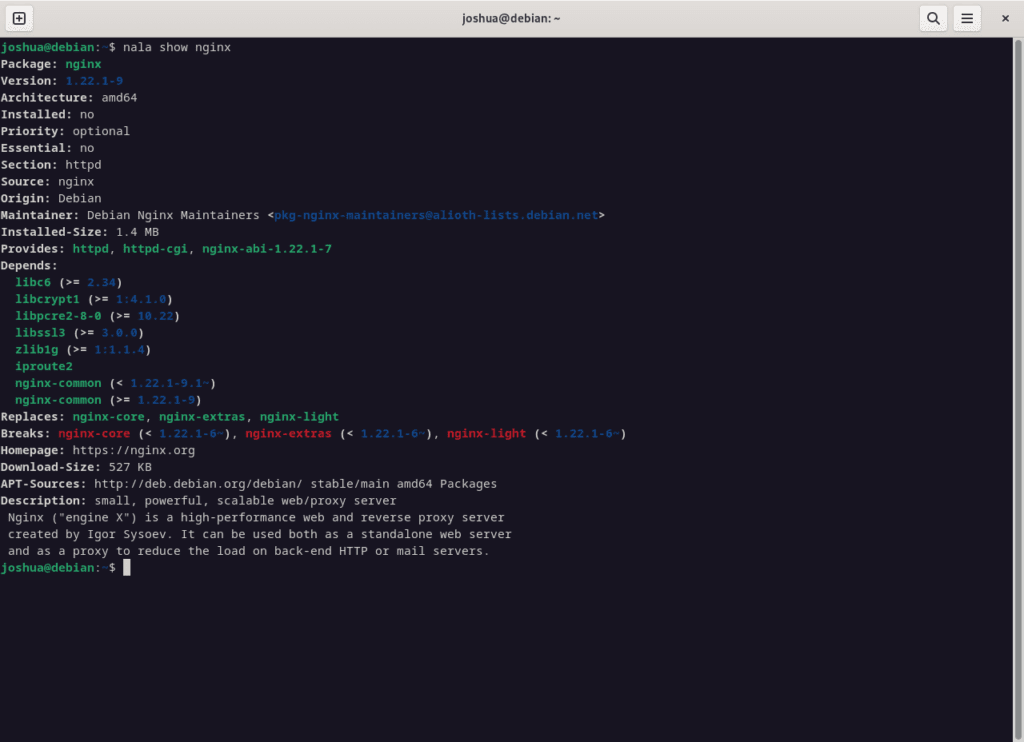Nala is a top choice for Debian users seeking an efficient package management solution. If you aim to install Nala on Debian 12 Bookworm, Debian 11 Bullseye, or Debian 10 Buster, this guide is tailored for you. Let’s delve into what makes Nala a preferred front-end for libapt-pkg and its integration with the python-apt API.
Key Features of Nala:
- User-Friendly: Nala offers a straightforward interface, simplifying package management tasks.
- Seamless Integration: Nala works smoothly with the APT library, thanks to its use of the python-apt API.
- Efficient Dependency Handling: Nala expertly manages package dependencies, ensuring a stable software environment.
- Broad Compatibility: Designed with python-apt, Nala works consistently across various Debian-based systems.
In essence, Nala provides Debian users with a reliable and easy-to-use package management tool. As we progress, this guide will detail the steps to harness Nala’s capabilities on your Debian system.
Install Nala on Debian 12, 11, or 10 via APT
This section will focus on installing Nala through Debian’s APT repository. This method is reliable and aligns with Debian’s package management practices.
Step 1: Update Debian Before Installation of Nala
To ensure a successful installation of Nala, it’s vital to start by updating the system packages, and keeping your system up-to-date guarantees that you are installing Nala in an environment with the latest dependencies and security patches.
Execute the following command:
sudo apt update && sudo apt upgradeThis command fetches the list of available packages from the repository and upgrades any outdated packages. The sudo prefix is used to execute the command with administrative privileges.
Step 2: Install Nala via APT Command on Debian
Now that the system is updated, we can proceed to install Nala. The Advanced Package Tool (APT) is Debian’s package manager, designed for automatically installing, upgrading, and removing packages. Utilizing APT ensures that all dependencies required by Nala are also installed.
Execute the following command to install Nala:
sudo apt install nalaThis command tells APT to install the Nala package. If required dependencies are not installed on your system, APT will resolve them and install them.
Step 3: Verify Nala Installation on Debian
After the installation is complete, it is a best practice to verify that Nala has been successfully installed. This step ensures that Nala is not only installed but is also functional. To check the version of Nala installed, execute the following command:
nala --versionThis command will display the version number of Nala, indicating that it has been successfully installed.
Install Nala on Debian 12, 11, or 10 via APT PPA (Volian Scar)
An alternative approach to installing Nala is by utilizing the Volian Scar repository. This repository tends to offer updates at a slightly quicker pace compared to the Debian repositories. However, it’s imperative to note that volian-archive-scar allows the installation of newer dependencies to ensure compatibility with Nala. This may lead to unintended consequences, as the packages and Nala are not specifically designed for these releases.
Step 1: Install Required Packages For Nala
Before proceeding, specific packages must ensure the system can add a new repository and handle secure communication over HTTPS. Execute the following command:
sudo apt install curl software-properties-common apt-transport-https ca-certificates -yThis command installs curl for fetching data from URLs, software-properties-common for managing repositories, apt-transport-https to enable package management over HTTPS, and ca-certificates to allow the system to verify the authenticity of SSL certificates.
Step 2: Import Volian Scar APT Repository For Nala Installation
Now, let’s import the GPG key of the Volian Scar repository. The GPG key ensures the authenticity and integrity of the packages installed from this repository. Use the following command to import the key:
curl -fSsL https://deb.volian.org/volian/scar.key | gpg --dearmor | sudo tee /usr/share/keyrings/volian.gpg > /dev/nullAfter importing the GPG key, the next step is adding the Volian Scar repository to your system. Run this command:
echo "deb [signed-by=/usr/share/keyrings/volian.gpg] https://deb.volian.org/volian/ scar main" | sudo tee /etc/apt/sources.list.d/volian-archive-scar-unstable.listStep 3: Refresh APT Package Index After Nala PPA Import
After adding the Volian Scar repository, updating the APT package cache is essential. This ensures that APT knows the new packages available from this repository.
Update the APT cache with the following command:
sudo apt updateStep 4: Install Nala on Debian via Volian Scar PPA
With the repository successfully added and the APT cache updated, you can now install Nala from the Volian Scar repository by executing the following:
sudo apt install nalaStep 5: Confirm Nala Version on Debian
To ensure that Nala has been installed and operational, checking its version is good practice. Use the following command to display the version of Nala:
nala --versionFollowing these steps, you have successfully installed Nala via the Volian Scar repository. This method is advantageous for users seeking the latest updates faster.
However, it’s essential to exercise caution due to the newer dependencies, which may not have been tested extensively with your Debian Linux release.
Nala Command Basics with Debian 12, 11 or 10
In this section, we focus on the fundamental commands of Nala, a proficient front-end for libapt-pkg. With its streamlined interface, Nala simplifies package management tasks. A thorough understanding of these commands is vital for leveraging the full capabilities of Nala in managing packages on Debian Linux.
Checking Nala Version
Let’s start by verifying which version of Nala is installed. This information is crucial for compatibility and troubleshooting purposes. To check the version, execute the following command:
nala --versionUpdate APT Package Lists with Nala on Debian
One of the most common tasks in package management is keeping the package lists updated. This ensures that you are informed of the latest versions and patches. To update package lists with Nala, use the following command:
sudo nala updateThis command synchronizes the package index files with their sources.
Upgrade APT Packages with Nala on Debian
Keeping your system up-to-date is indispensable. After updating the package lists, you might want to upgrade the installed packages. To perform an upgrade, execute:
sudo nala upgradeThis command will upgrade all installed packages to their latest versions.
Install APT Packages with Nala on Debian
When you need to install a specific package, Nala makes it straightforward. To install a package, use the following syntax:
sudo nala install <package-name>Replace <package-name> with the actual name of the package you wish to install.
Remove Packages with Nala on Debian
If you need to uninstall a package, Nala provides an easy-to-use command for this purpose. To remove a package, enter the following command:
sudo nala remove <package-name>Like the installation command, replace <package-name> with the name of the package you want to uninstall.
Search APT Packages with Nala on Debian
To search for a package within the repository, Nala offers a search command that helps you find packages based on keywords. Use this syntax:
nala search <keyword>Replace <keyword> with the term you are searching for.
ViewPackage Information with Nala on Debian
Nala provides the ability to view detailed information about a particular package. To retrieve package information, use the following command:
nala show <package-name>Again, replace <package-name> with the name of the package you want to query.
Conclusion
This guide elucidated the steps to install Nala on Debian 12 Bookworm, Debian 11 Bullseye, or Debian 10 Buster using the APT package manager. Additionally, we explored an alternative installation method through the Volian Scar repository. Following this, we delved into the fundamental commands for effectively utilizing Nala. As an adept front-end for libapt-pkg, Nala provides a streamlined interface for package management, making it a valuable tool for system administrators and users.
As a final recommendation, it is prudent to stay updated with Nala’s latest releases and documentation to harness its full potential. Engage with official sources for the most reliable information and updates.

